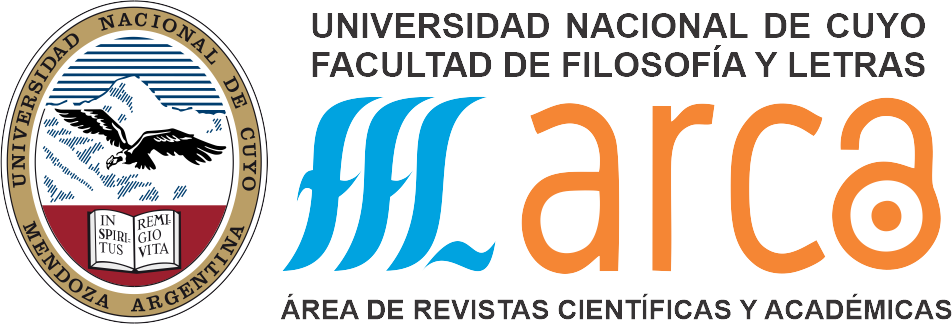An Approach to the Cognitive Processes Involved in the Use of Cohesive Resources in Children's Narratives
Keywords:
language development, cohesion, null subject, linguistic competenceAbstract
The present investigation has the objective of studying the cohesive resources in children's narratives, to determine which factors affect their development. Defagó (2018) studied written accounts of first and second grade Spanish-speaking children and identified that some formal linguistic tools (therefore, abstract) appear and are used correctly faster than others that do have lexical expression. This situation, very noticeable in the cohesion resources, indicates a kind of
asymmetry between the development of these elements and their apparent levels of complexity (due to the abstraction required for their mastery).
Our study is a continuation of that precedent to investigate if the asymmetry is also manifested in orality. We analyze oral stories produced by Spanish-speaking children of 7 or 8 years old (in second grade), in order to observe the behavior of
null sentence subjects (phonetically empty), an abstract and complex tool. To establish possible contrasts, we also observe the pronominalization of the subject (another formal resource) and the use of extra-sentential links (lexical units present on the surface of the language) in the same productions. The results showed an excellent command of the formal tools, without cases of
decontextualized uses or with unrecoverable referents, but a poor handling of extra-sentential connectors: little variety, many unnecessary repetitions and ambiguous connections. The asymmetry, effectively present in orality, does not
seem to be linked to this apparent complexity but to the cognitive processes linked to the use of each resource, especially in relation to linguistic competence (Chomsky, 1965).
References
Bel, A. (2001). Sujetos nulos y sujetos explícitos en las gramáticas iniciales del castellano y el catalán. Revista Española de Lingüística, 31(2), pp. 537-561. URL: http://revista.sel.edu.es/index.php/revista/article/view/1698
Belinchón Carmona, M., Igoa González, J. M. y Rivière, A. (1992). Psicología del lenguaje: investigación y teoría. Trotta.
Chomsky, N. (1965). Aspectos de la teoría de la sintaxis. Aguilar.
Chomsky, N. (1982). Lectures on government and binding, Dordrecht, Foris.
Chomsky, N. (1986). El conocimiento del lenguaje: su naturaleza, origen y uso. Alianza.
Chomsky, N. (1988). La nueva sintaxis. Teoría de la rección y el ligamiento. Paidós.
Chomsky, N. (1995). The Minimalist Program. The MIT Press.
Chomsky, N., y Lasnik, H. (1991). Principles and parameters theory. En J. Jacobs (1991) [Ed.] Syntax: an International Handbook of Contemporary Research. De Gruyter.
D'Introno, F. (2001). Sintaxis generativa del español: evolución y análisis. Cátedra.
De Beaugrande, R. y Dressler, W. U. (1981). Cohesión. En Introducción a la lingüística del texto. Ariel.
Defagó, C. (2018). Los recursos lingüísticos más allá de la oración: una interpretación de su desarrollo. En A. Gonzalo, C. Carrió y C. Parera (Comp.) Lingüística Generativa: desde los estudios teóricos a las reflexiones histórico-filosóficas (pp. 10-28). ISBN 978-987-749-118-0. URL: https://www.fhuc.unl.edu.ar/institucional/wp-content/uploads/sites/3/2018/08/Linguistica-generativa_Digital.pdf
Devís Márquez, P. (2011). El Parámetro del Sujeto Nulo y la enseñanza del español como lengua extranjera. Reflexión gramatical. Didáctica. Lengua y Literatura, 23, pp. 59-86.
Halliday, M. A. K. (1985). An Introduction to Functional Grammar (1st Ed.). Edward Arnold.
Hualde, J. I. (2005). The sounds of Spanish. Cambridge University Press.
Karmiloff, K., y Karmiloff-Smith, A. (2005). Hacia el lenguaje: del feto al adolescente (Vol. 28). Ediciones Morata.
Fernández Lagunilla, M., y Rebollo, A. A. (1995). Sintaxis y cognición. Síntesis.
Raiter, A., y Jaichenco, V. (2002). Psicolingüística: Elementos de adquisición, comprensión, producción y alteraciones del lenguaje (No. 159.964. 3/. 4). Editorial Docencia.
Shum. G., Conde, A., Díaz, C. (1989). ¿Cómo se adquieren y usan los términos deícticos en lengua española? Un estudio longitudinal. Infancia y Aprendizaje, 49, pp. 45-64.
Shum, G. (1993). El pronombre en el lenguaje formal del niño. Infancia y aprendizaje, 61, pp. 107-121.
Downloads
Published
How to Cite
Issue
Section
License
Copyright (c) 2023 Camila Mendoza
Esta obra está bajo una Licencia Creative Commons Atribución 2.5 Argentina.
Los/as autores/as que publican en esta revista están de acuerdo con los siguientes términos:
1. Los/as autores conservan los derechos de autor y garantizan a la revista el derecho de ser la primera publicación del trabajo bajo una licecncia Creative Commons Atribución 2.5 Argentina (CC BY 2.5 AR) . Por esto pueden compartir el trabajo con la referencia explícita de la publicación original en esta revista.
2. Anales de lingüística permite y anima a los autores a difundir la publicación realizada electrónicamente, a través de su enlace y/o de la versión postprint del archivo descargado de forma independiente.
3. Usted es libre de:
Compartir — copiar y redistribuir el material en cualquier medio o formato
Adaptar — remezclar, transformar y construir a partir del material para cualquier propósito, incluso comercialmente.












